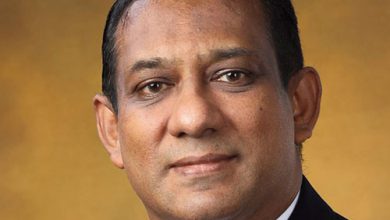TOURISM INDUSTRY
Compiled by Shirley Candappa
SPOTLIGHT ON NICHE MARKETS
Malin Hapugoda believes that the way forward is to promote niche markets
Q: Having weathered the good and the bad over the years, where do you think the tourism industry stands at present?
A: I have seen Sri Lanka’s tourism industry’s journey from the early 1970s to 2015 and beyond. In the 1970s and early ’80s, until the 1983 riots and the civil war, there was phenomenal growth. Some hotels in the 1970s even paid out 100 percent dividends.
Then came the July 1983 riots and a prolonged conflict, which impacted the entire industry. The lucrative operations we enjoyed were turned upside down. We then became very good crisis managers – until 2009.
Following the 1987-1989 insurrection and the tsunami in 2004, the industry all but shut down.
Nevertheless, the resilience of the industry shone through because 95 percent of it was in the hands of the private sector. There were a number of major operators that had diversified their business interests and they were able to continue running their hotels because of the revenues generated from other ventures.
Unfortunately, following the end of the civil in 2009, we did not market our destination properly. During the war, the number of tourist arrivals dropped and those who visited our shores were budget travellers.
We should have developed a new marketing strategy that advertised a wider range of attractions in Sri Lanka such as its wildlife parks, historic sites, Ayurvedic treatments, windsurfing, whale watching and so on. In addition, we should have sought niche markets.
Regrettably, the government of the day did not agree with this strategy even though industry leaders explained the virtues of promoting Sri Lanka in niche markets. The response was that international visitors would visit the country because everyone knew the war was over.
Tourists did travel here in larger numbers but they were from the same low budget segment that visited during the war. As a result, it became more difficult to maintain hotels since the revenues generated were low.
And finally, the Easter Sunday attacks in 2019, lengthy lockdowns due to the COVID-19 pandemic and the ensuing collapse of the economy hit the industry very hard.
Today, the authorities are beginning to see the need to change their strategies and place greater emphasis on attracting more discerning clients from higher spending market segments.
However, other countries in the region are doing much better – we’re lagging behind mainly because of our economic problems.
Q: Can Sri Lanka’s decades old tourism proposition of ‘sun, sea and sand’ continue to hold sway in today’s context? If not, how can the industry move past it and evolve?
A: Being an island, our mainstay will always be the sea but we must intelligently prepare a balanced marketing mix of high value niche areas and mass tourism attractions that include the sun, sea and sand.
The niche product should cover at least 40 percent of Sri Lanka’s tourism portfolio.
With a niche product such as Ayurveda for instance, the costs are lower than in traditional tourism, and it is unique to Sri Lanka and India. We have historic marvels such as Sigiriya but not enough qualified guides to explain the history of the fortress, the politics of that time and the famous frescoes.
Simply taking visitors to the summit and bringing them down isn’t sufficient. But if we can provide qualified guides, we should be able to attract a more discerning group of tourists who are interested in history, culture and archaeology.
Sadly, we’re not able to manage even our wildlife parks efficiently – sometimes, you find more jeeps than animals in the parks! We have to regulate them by judging the capacity in each park.
Take the case of Yala: if you try to safeguard the park by controlling the number of vehicles that enter in an effort to make it more attractive to tourists, it won’t be permitted because drivers will complain to local politicians and they’ll insist the park be kept open for safaris.
Q: How can the industry adopt new technologies to keep pace with market trends?
A: In the 1970s, ’80s and ’90s, tourism was driven by travel agents. Today, internet marketing has become the norm.
You can get a much better rate and attract more people who want to visit Sri Lanka for the country’s genuine attractions. So technology should be used to the maximum in marketing.
One of the island’s attractions is the friendliness of its people; and since tourism is a leisure driven marketing segment, we shouldn’t neglect the human element.
Meanwhile, front and back office operations in tourism related businesses will certainly benefit from the introduction of technology.
Q: And finally, what are some of the ongoing challenges facing the tourism industry?
A: Presently, our overheads constitute the greatest challenge. In addition to the rising cost of electricity, food and staffing, the taxes being levied on our revenues are extremely high.
For example, there’s 15 percent VAT, a one percent tourism development levy and a 10 percent service charge. Therefore, around 27 percent of our top line is lost before we can begin to calculate the cost of operations. Hotels are struggling to survive because of this situation.







